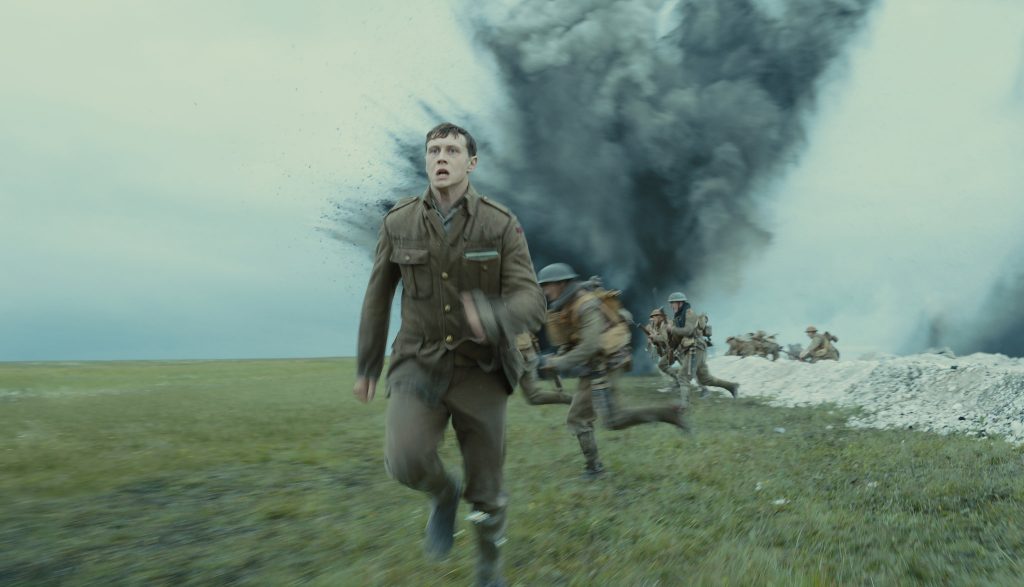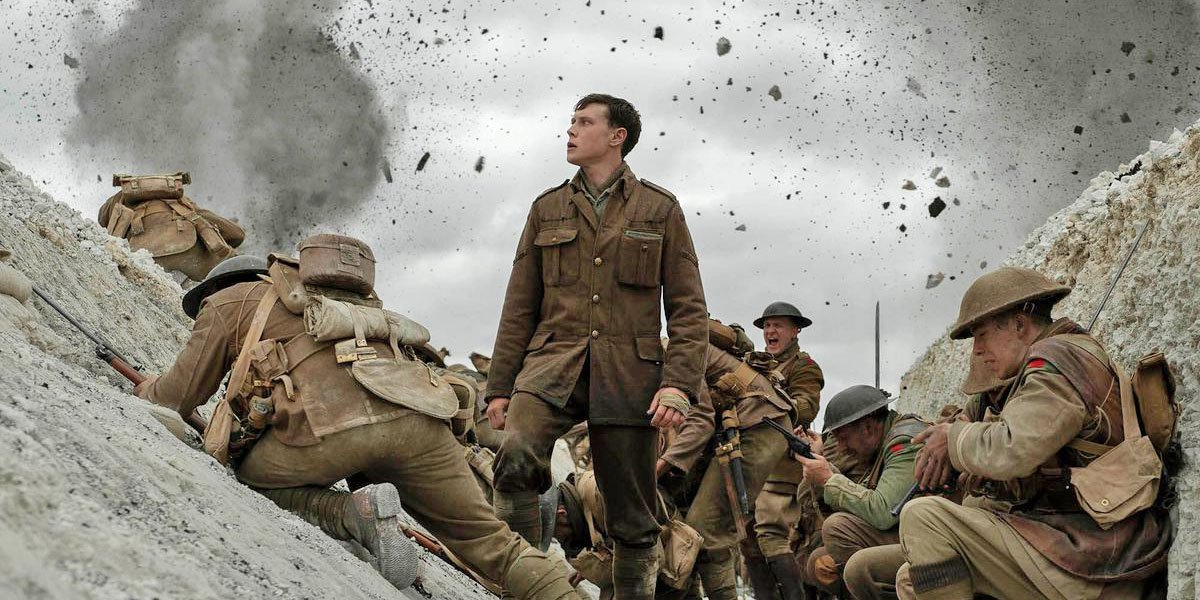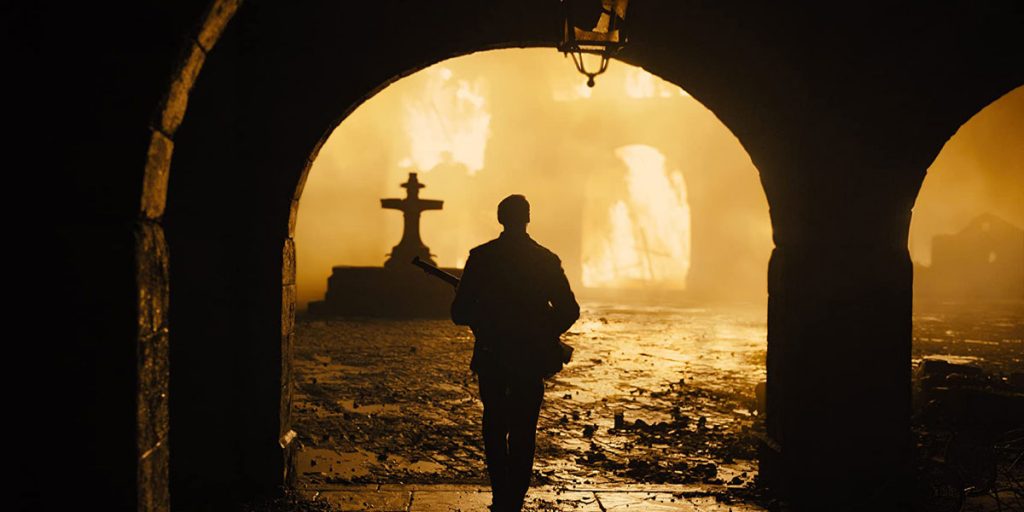1917‘s long takes and hidden cuts create a “cinema of the moment” that immerses us into a visual experience free from the logic of time and visible editing.
I’ve been in quarantine for almost two months and I desperately miss going to the cinema. I miss sitting in a darkened theater, leaving the outside world behind for a couple of hours and losing myself in the overwhelming presence of a film on the big screen. My last trip to the cinema felt like it was ages ago, in January when I saw 1917. While watching this, I spontaneously conceived a film theory that helped me understand how to best engage with the film and gave me a deeper appreciation for its technical and narrative merits.
I call this theory the “cinema of the moment,” which I understand as an approach to film concerned with capturing a “moment,” using visual techniques to immerse us into a time and a place. Film is the perfect medium to immerse us into new experiences: it is equipped with images, sound, time, and motion, and even on the two-dimensional screen, films can realize their imagined worlds with an organic sense of visual depth.
1917 centers itself on the visual experience. Long takes and hidden cuts mimic a continuous shot for its two hour runtime, a technique seen in films like Rope and Birdman. It’s an impressive cinematic trick that deepens our immersion into the world onscreen—the absence of discernable editing makes us forget that we are watching a film. At first, the long takes suggest the events unfold in real time, but the story occurs over a period of about twenty four hours. There’s no temporal logic to 1917, as the film asks us to ignore measurements of time like hours and minutes, and instead lose ourselves in images uninterrupted by visible transitions between shots.

There is a remarkable sense of dimension and depth to this film’s cinematic world. Almost always in motion, the camera dances with graceful, ethereal maneuvers to establish spatial geography and change perspective even within the long take shots. Hidden cuts occur when objects appear in the frame, briefly covering the direct line of sight of our protagonists Schofield and Blake as the camera follows them. Fixtures of scenery like trees, artillery guns, passing soldiers, and trench and farmhouse architecture populate the frame, adding layers to the spatial world these characters inhabit and travel through. Smoke and rubble from artillery blasts add murky texture, and there’s even a shot where the camera suddenly pivots with the motion of an explosion, letting us feel the power of its shockwave. It’s a compelling experience to enter this film, letting the camera take us on an unpredictable visual journey through this world.
Narratively, 1917 is sparse and contained. The film is so hyper-focused on its story that everything that occurs before and afterwards is irrelevant, and by the end, everything even seems inconsequential in the grand scheme of the surrounding First World War. It’s just a simple story of two solders on a mission that takes place over one day, in the middle of a four year war that involved millions of lives. This is why the film is so gripping and suspenseful—it magnifies its small scale story into a material experience for us to witness, to watch as if we were present running through trenches and across battlefields to deliver a message.
In 1917, visual technique is more than just a gimmick: it presents us with a new way of “seeing” a film. We are encouraged to ignore the logic of time and to witness images unbroken by traditional forms of editing. We are invited to surrender to the screen, to be immersed in a particular time and place, to feel the immediacy and thrill of danger and to experience being in the moment of the race against time on an urgent mission.
1917 is now available to watch on digital and on demand, and on DVD and Blu-Ray. Read our review of 1917.

 loudandclearreviews.com
loudandclearreviews.com
